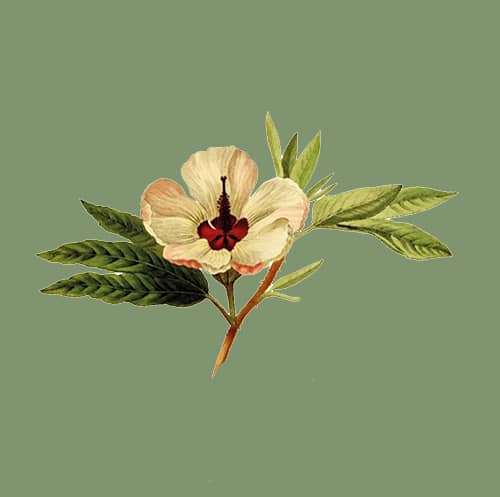A talented garden designer, professional writer and published author, we recently caught up with Tabi Jackson Gee to talk all things garden design.
Creating striking gardenscapes that flourish beautifully throughout every season, Tabi is the founder of TJG Gardens and is celebrated for her idyllic designs that both enrich and enhance the beauty of their existing landscapes. Passionate about preserving the history and stories contained within each and every one of her gardens, in this exclusive interview, Tabi shares an insight into the creative process behind her showstopping designs. Discussing luxurious landscaping features to even taking a sneak peek into her very own garden, explore the beauty of landscape design with TJG Gardens and Them Outdoors founder, Tabi Jackson Gee.
1. As a talented landscape designer, what do you enjoy the most about garden design and where did you develop your passion?
The best thing about garden design is that you never stop learning. About plants, places, people, materials; things are always evolving, and no brief is remotely the same. I also love the challenges that working with the natural world brings; you have to think long term, and you have to be flexible and watch what happens in a garden, season to season, to truly work in harmony with it.
My favourite projects are the ones where I work really closely with my clients collaborating on the design and then get to stay on board as the garden grows and changes. You learn so much every time you visit a garden and that is a great joy.
2. What is your favourite garden style and why?
I don’t have a favourite garden style but whenever I drill down into what I love about a garden it’s usually to do with the balance of informality and structure. Where straight lines meet unconfined and wild planting, or where the architecture, sculptural forms and human influence is perfectly proportioned to the feeling of nature taking over.
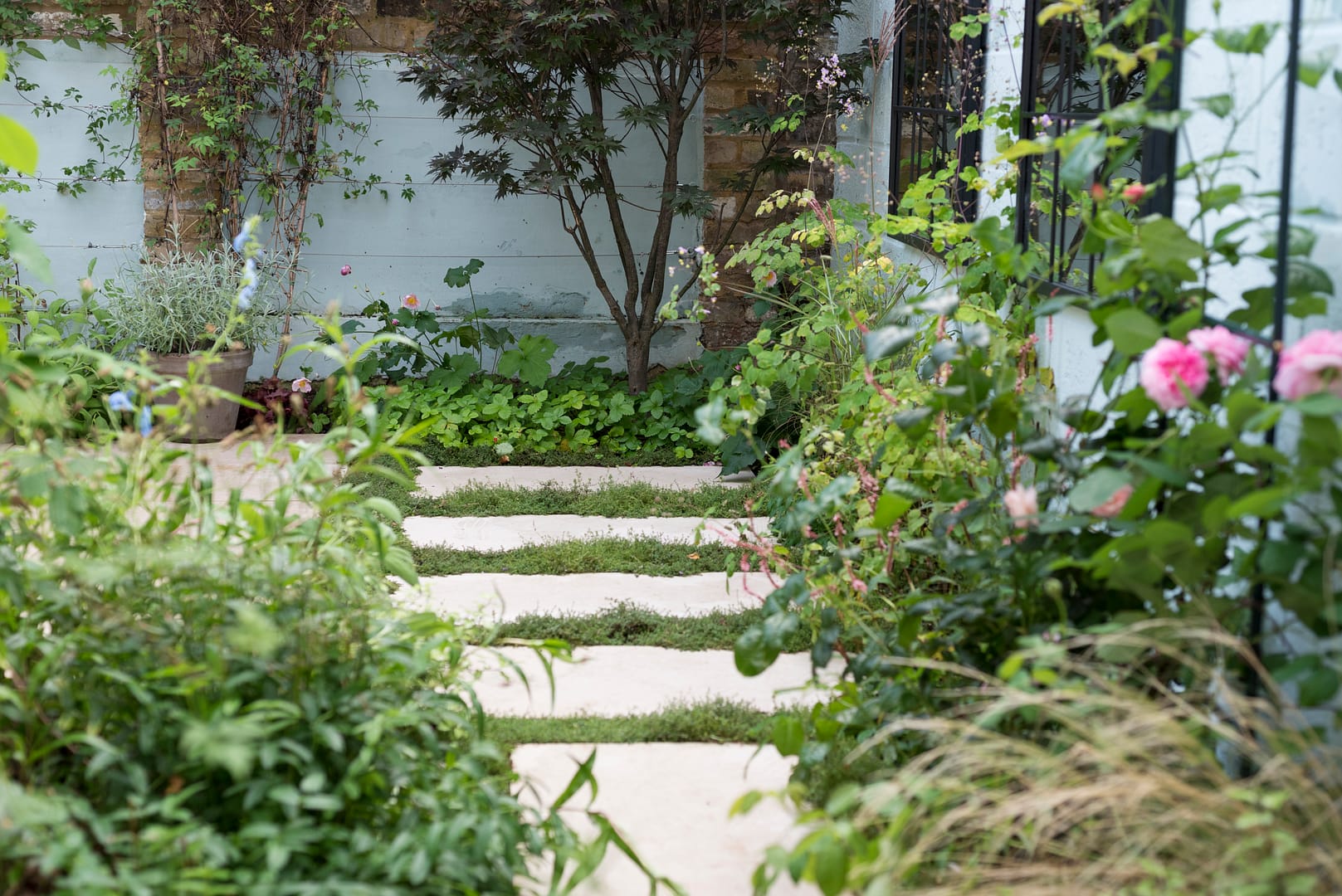
3. On your website you say that with every brief you “tap into the stories and history of each landscape”. Do you have any examples from your projects where you have been asked to enhance or embed historical elements throughout a design?
As a writer, I am always looking for stories and the same applies to my garden design process. In my Northamptonshire Country Garden project there were a lot of established plants from mature yew hedges to topiary and some incredible trees. I wanted to make these really sing, whilst also adding planting that was beautiful and had a more modern, prairie-style look to it to soften the more traditional structural elements.
At the Milking Parlour at Monksmead Farm in Berkshire, the garden was on the edge of a working farm and as such really blurred the lines between garden and managed landscape. I found this deeply inspiring as a starting point and an existing, majestic oak tree ended up informing the shape of the design. Observing things like this help ground a garden and a landscape and make them more beautiful in the long run; when there is meaning and a purpose behind the design and the aesthetic choices.
Other times there might be a piece of architecture that we want to pick up on, or proportions from the house that help dictate the immediate surrounding of the garden. The history of the garden, house and its inhabitants are always rich with starting points for a new design story.
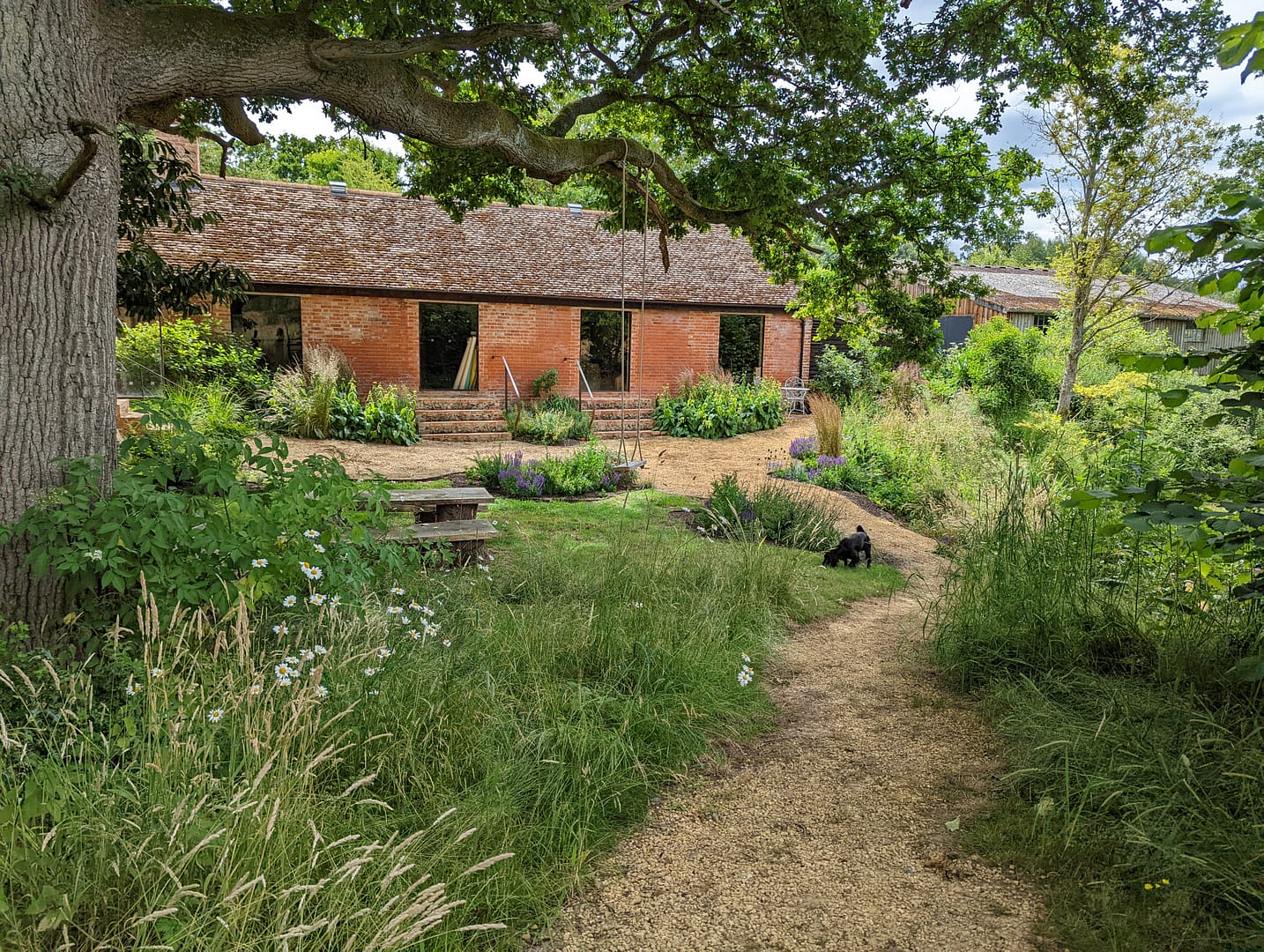
4. As a writer for House & Garden and the Financial Times, what are some of your preferred article topics to write about?
I write very broadly about gardens, design, the environment and how we look after the land. That can find me writing a piece on regenerative growing, interviewing chefs, farmers, gardeners and scientists – or waxing lyrical about wildflowers, or doing a deep dive into garden design history. It’s a wonderful privilege to be able to research topics that I’m interested in and speak to some of the most fascinating people in the name of work – and something I never take for granted.
5. You’ve recently moved to Wiltshire, but you know our neck of the woods well. What are some of your favourite spots, shops and hidden gems? (these could be anything from favourite open gardens, restaurants, delis or anything/anywhere that you love).
We lived really near Broughton Grange last summer, and I went there a number of times. To see a contemporary private garden that is so grand and ambitious in scale, and so well cared for, is really an enormous treat and a bit of a rarity.
I also hoped to visit Rousham again while I was living locally – but I usually do my garden trips on Fridays with my son when he’s off nursery.
I was lucky enough to visit Angel Collins – who I have done lots of wonderful work with in the past – at her stunning garden nearby in Warwickshire. It’s so fun seeing how other designers garden at home.
On the weekends we also loved going to Wykham Farm Shop and walking our dog at Edge Hill. Those views!
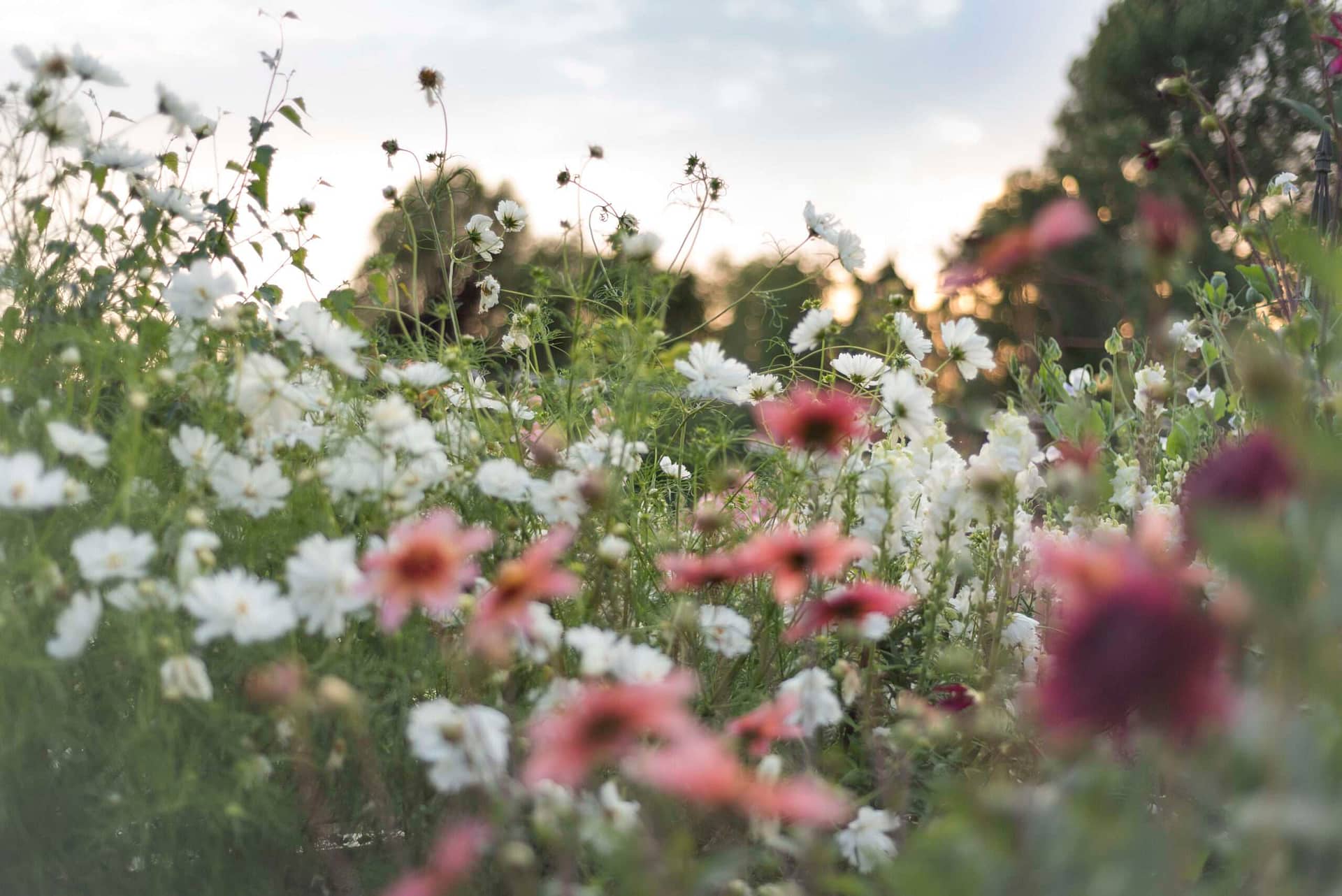
6. Soft landscaping is a crucial part for putting the finishing touches to any garden design. Are there a few personal planting favourites that you like to include within your designs?
I try and avoid using too many of the same plants, but do have a few favourite that seem to sneak in quite often. These usually tall and sculptural plants like sanguisorbas, phlomis or ornamental grasses like Calamgrsostis brachyticha.
Lower down I always like to include plenty of ground cover to keep the weeds at bay and help improve soil health, such as Fragaria vesca (wild strawberries). And speaking of edibles; I love including medicinal herbs and plants you can use in the kitchen like fennel, nasturtiums and rosemary.
7. When designing a garden, what are a few signature landscaping features that you like to include and why?
Water and shade. These can take so many forms but they’re essential. Water for wildlife primarily, but also for the sense of movement it can bring, or gentle background noise, or simply reflecting the foliage around it. It adds a whole other dimension to a garden and can be as small as a tiny raised pond or even a beautiful bird bath.
Shade, because shadows again add another dimension to a garden and this can be in the form of a bespoke pergola or a carefully positioned small specimen tree.
8. Your recent display for Kent Wildflower Seeds won a Silver Gilt medal at the RHS Chelsea Flower Show 2024, congratulations! Could you please tell us a bit about the inspiration behind the design?
This was the most wonderful brief, from the most wonderful client. We wanted to show people how to use wildflowers in traditional garden settings as opposed to just meadows; so we positioned them in a kitchen garden, in a medicinal garden, showed how they’d appear self-seeded in gravel or could be used under specimen trees or even in small container gardens.
I’m setting up a new platform for British-made garden furniture and sculpture called Them Outdoors and was fortunate enough to be able to commission shell artist Mel Campion to create some incredible shell-clad planters for the installation at Chelsea. Showing wildflowers – which are so often considered to be weeds – in such a highly ornamental setting was a brilliant experience and has started a life long love affair with native plants for me.
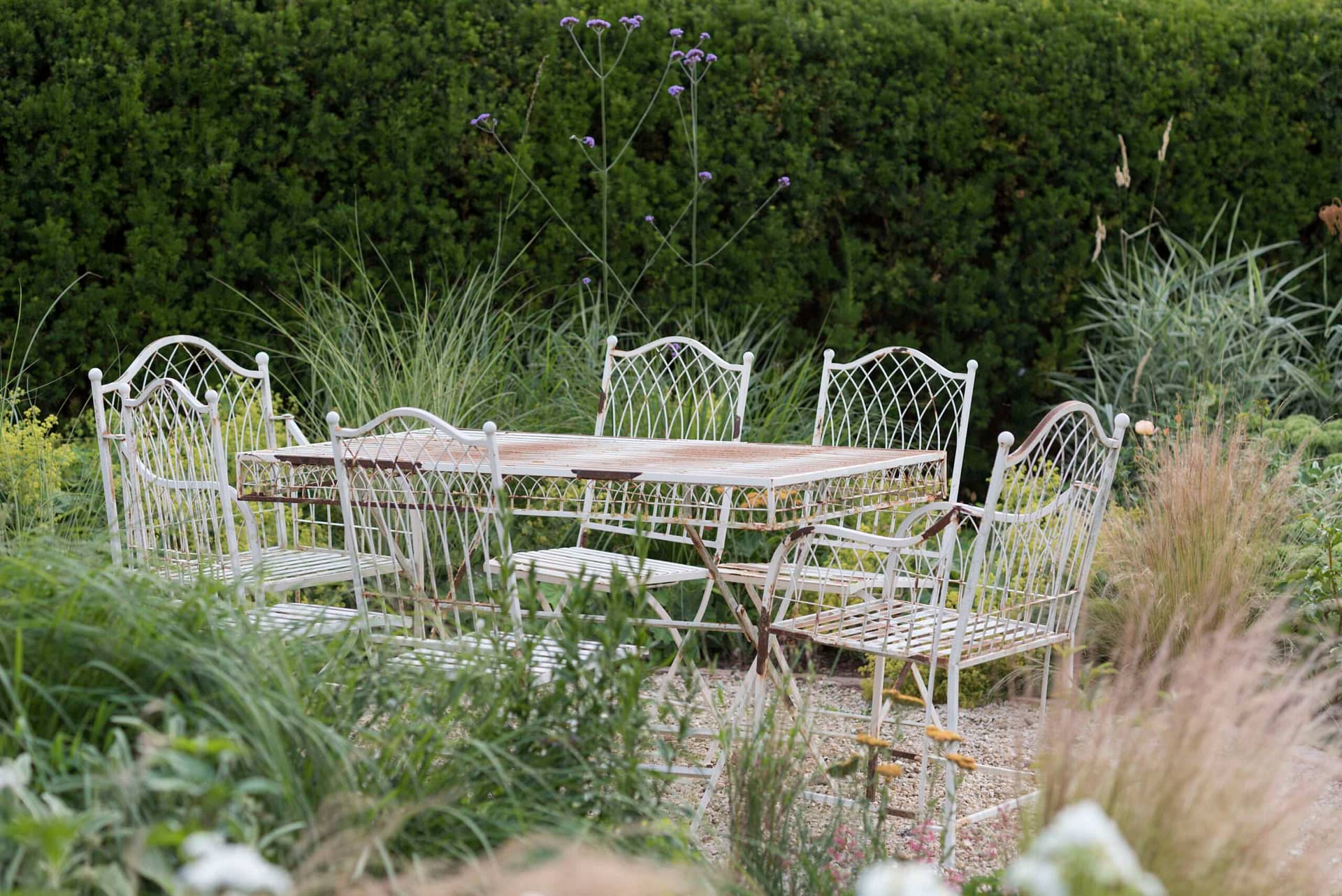
9. We agree that gardens should flourish throughout the seasons and for decades to come. Could you share a few ways that you embed year-round interest throughout your landscape designs?
First and foremost this is about communicating with my clients. I like to talk about the changing seasons; how the weather and the light will affect the garden throughout the year; and how this is something to be embraced not afraid of. I also encourage my clients to leave as many plants standing over winter as possible, so that their seedheads can be enjoyed. This is a big shift in how people have gardened in the past but it’s exciting to see so many people embracing it.
It also goes back to the balance of hard landscaping and soft. Not only in the proportions but also in using as many natural materials as possible and creating hard landscaping details that fit seamlessly within the wider setting.
Then it’s about punctuating the garden with beautiful trees; my favourites are all deciduous ones that have long seasons of interest and sculptural trunks, or evergreen hedging and topiary that provide the bones of a garden. You don’t want to be looking at a sea of brown, floppy plants in the winter so these elements are essential for the architecture of the garden.
10. Can you tell us what your own garden is like? Or what you’re planning for it, seeing as you’ve not long moved?
My own garden is the definition of a work in progress; and I suspect always will be! I have so much to learn from it and with two businesses and small children to look after I have made a promise to myself not to bite off more than I can chew.
We inherited quite a mature front garden which in itself is a very decent size, with a lovely yew hedge, about fifteen roses and lots of cottage garden plants. It’s been so fun watching what comes up when and being able to find leaves for herbal teas and fill the house with cut flowers all summer; so I’m very grateful to the people who’ve lived here before and put so much love into it.
The back garden is big, especially considering we’re right in the middle of a small town, with an old stable and some out buildings, a courtyard and a huge walled garden that is mostly lawn (but won’t be for long). This is what made us fall for the house really; there was so much space and opportunity to make it our own.
I’ve already started adding more plants and carving out some big borders, growing most things from seed directly in the no dig borders to minimise the need to water, and we’ve also got a very healthy collection of sweet peas, tomatoes and courgettes on the go. Having not had my own garden since childhood this is just the best thing ever and I will never be bored again.
With thanks to Tabi for her time and for providing all images.
Head over to her Instagram page, @tabijgee_gardendesign and her website to see more of her glorious garden designs.


